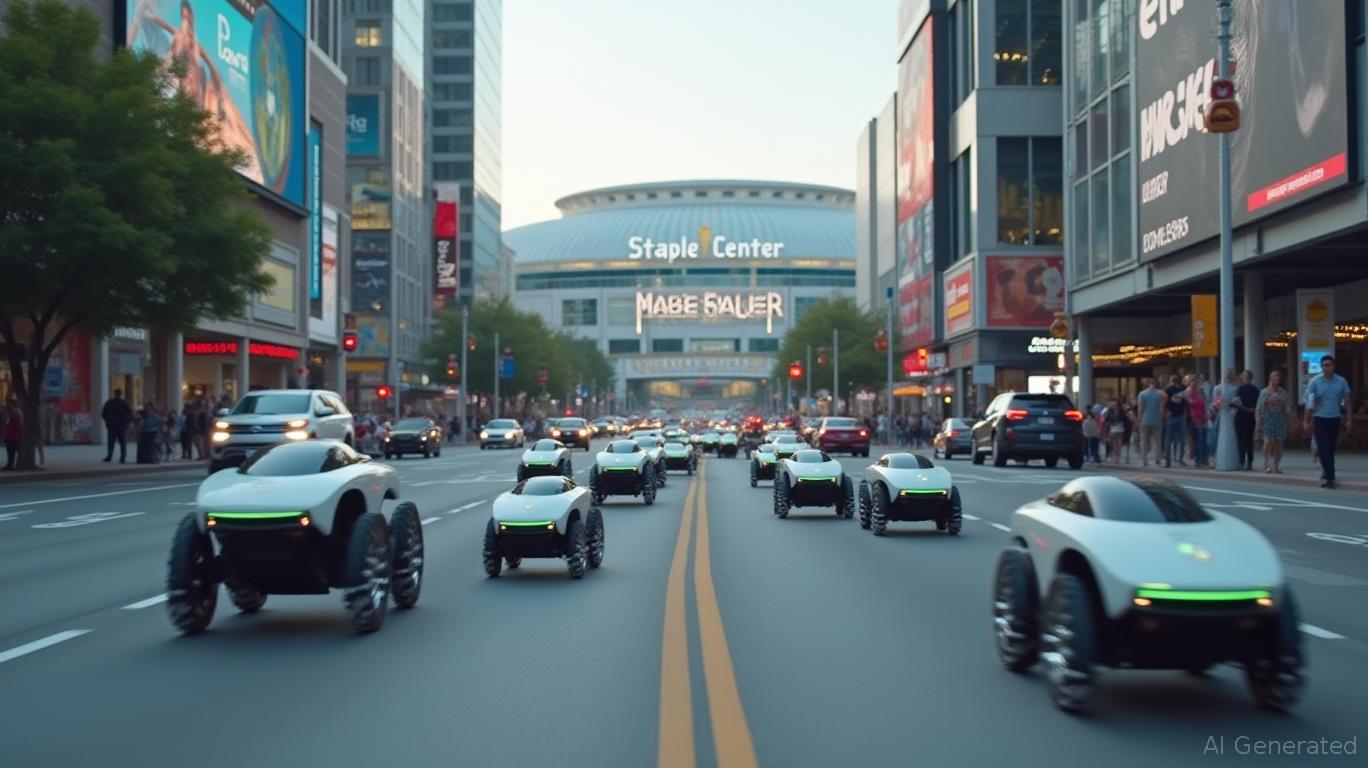DoorDash and Coco: The Future of Food Delivery?
Thursday, Apr 10, 2025 9:24 am ET
In the ever-evolving landscape of food delivery, DoorDash has once again pushed the boundaries of innovation with its expanded partnership with Coco Robotics. The launch of sidewalk robot delivery services in Los Angeles and Chicago marks a significant milestone in the company's quest to revolutionize last-mile logistics. But is this a genuine leap forward or just another Silicon Valley gimmick?

The partnership, which builds on a successful pilot program in Helsinki, introduces a fleet of emissions-free robots to nearly 600 participating merchants. This move is part of DoorDash's broader strategy to integrate Dashers, drones, and autonomous robots into a multi-modal delivery platform. The goal? To enhance delivery efficiency while reducing costs and emissions. But the real question is: can this technology truly deliver on its promises?
The operational efficiencies are indeed compelling. Main Chick Hot Chicken in Los Angeles, for instance, has implemented a robot "taxi line" that has resulted in faster deliveries during peak periods, improved customer satisfaction, and strengthened repeat business. This addresses a critical pain point in food delivery—maintaining quality and speed during high-demand windows. But is this a scalable solution, or will it remain a niche experiment?
The sustainability benefits are undeniable. The use of emissions-free robots aligns with growing corporate ESG priorities and can potentially deliver operational cost advantages at scale. However, the challenges are equally significant. Integrating robots into the existing delivery ecosystem requires substantial technological investment and development. DoorDash Labs, DoorDash’s robotics and automation arm, has been expanding its investment in autonomous delivery, but this process is ongoing and may face technical hurdles.
Moreover, the deployment of autonomous robots in urban areas may face regulatory challenges and public acceptance issues. DoorDash must ensure that its robots comply with local regulations and gain the trust of the communities they serve. This is no small feat, given the skepticism that often surrounds new technologies.
The competitive landscape is another factor to consider. DoorDash faces competition from other delivery platforms like Uber Eats and Grubhub, which are also exploring autonomous delivery options. Maintaining a competitive edge will require continuous innovation and adaptation to new technologies and market trends. But is DoorDash's approach truly innovative, or is it just another example of tech giants promising innovation while monopolizing it?
In conclusion, the expansion of DoorDash's partnership with Coco Robotics into the U.S. market represents a significant strategic advancement in its multi-modal delivery ecosystem. The integration of emissions-free delivery robots offers potential long-term sustainability benefits, including reduced carbon emissions, operational cost advantages, and alignment with corporate ESG priorities. However, the challenges of technological integration, regulatory compliance, scalability, and competitive pressures must be addressed to fully realize these benefits. Only time will tell if this is the future of food delivery or just another Silicon Valley experiment.





















